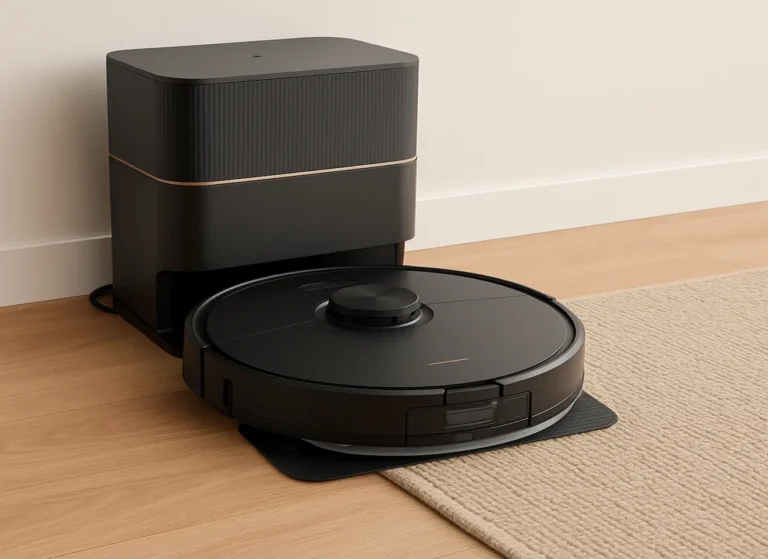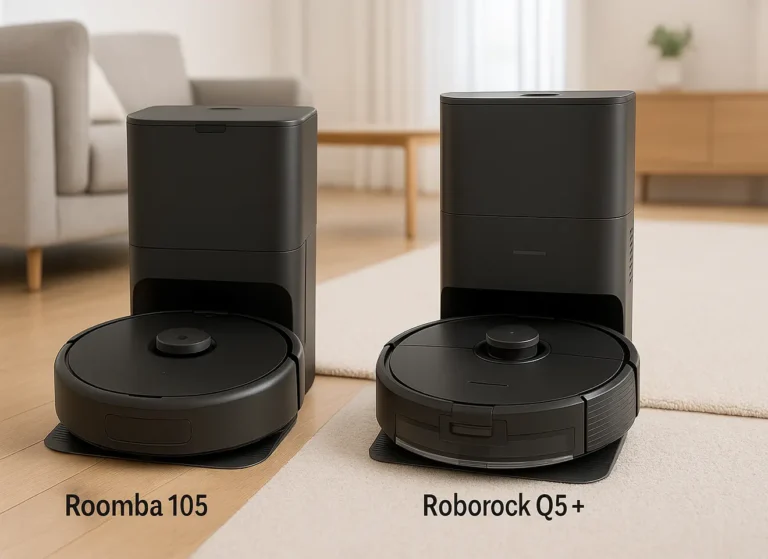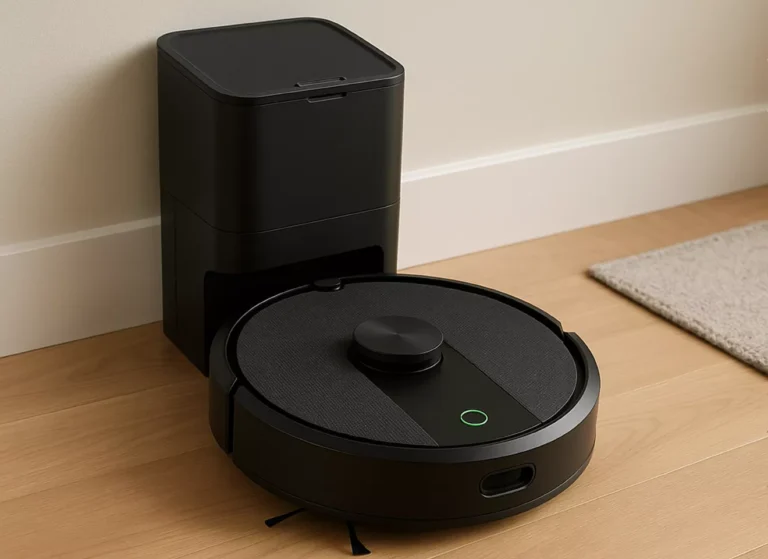What is a Smart Home? A Beginner’s Guide to Living Smart
by Jake Morgan
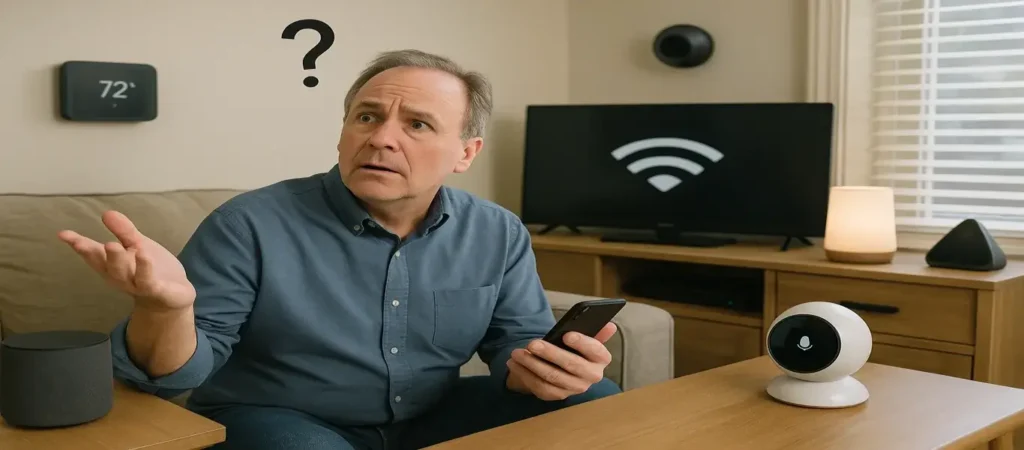
So, what is a smart home exactly?
If you’ve ever dreamed of living like the Jetsons (minus the flying car — still waiting on that one), a smart home might be the next best thing. Let’s break it down, keep it simple, and maybe have a laugh or two along the way.
What Does “Smart Home” Actually Mean?
In a nutshell, a smart home uses internet-connected devices to let you monitor and control household systems like lighting, heating, appliances, security cameras, or even your coffee maker — remotely or automatically. The goal? More convenience, more energy savings, and maybe more time to relax on the couch while your robot vacuum does the dirty work.
But it’s not just about gadgets for gadget’s sake. A smart home is about creating an environment that responds to your needs, routines, and habits. It’s home automation that makes life easier, not more complicated.
The Building Blocks of a Smart Home
Every smart home starts with a few essentials. Here are the usual suspects:
- Smart Plugs: These plug into regular outlets and turn dumb devices into smarter ones. Control your coffee maker, fan, or even Christmas lights from your phone or with a voice command.
- Smart Thermostats: Devices like the Google Nest Learning Thermostat (4th Gen) not only let you control your HVAC system remotely but also learn your preferences over time and optimize for energy efficiency.
- Smart Locks: Forgot your keys? No problem. Unlock your door from your phone, or even set up access for guests and family members with specific codes.
- Smart Lights: Turn them on and off from anywhere, dim them for movie night, or change the colors for fun. It’s lighting with personality.
- Smart Cameras & Doorbells: Whether you’re at work or on vacation, keep an eye on your home and know exactly who’s ringing your doorbell.
These devices form the foundation, and you can build up from there based on your lifestyle, needs, and — let’s be honest — budget.
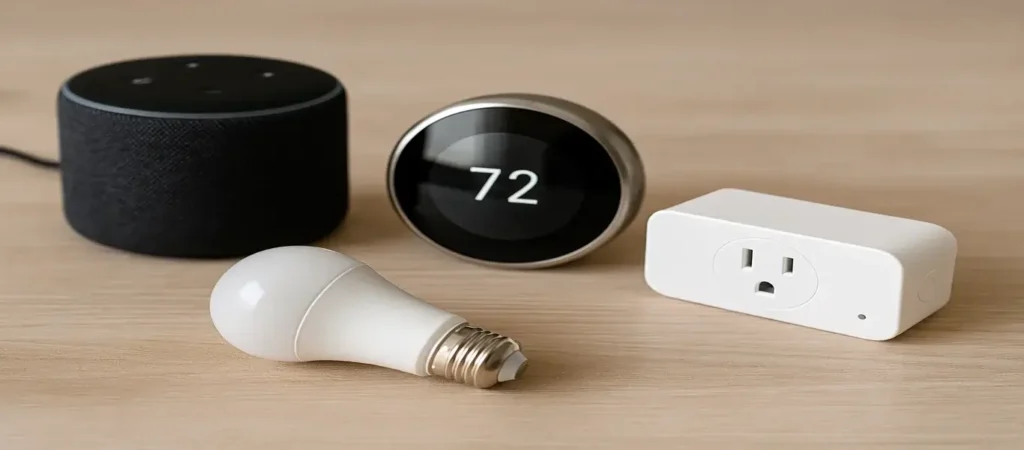
How Does a Smart Home Work?
Most smart devices use one of three communication methods: Wi-Fi, Zigbee, or Z-Wave. In other words, they all talk to each other and to your smartphone—usually through a central hub or individual apps.
You’ll probably also use a voice assistant like Amazon Alexa, Google Assistant, or Apple’s Siri to control them. The fun part? You can create routines. For example:
Walk into your entryway: the lights turn on, the thermostat sets to 72°F, and your security system disarms.
Say “goodnight”: the lights turn off, the doors lock, the thermostat lowers, and security cameras activate.
It might feel like magic, but it’s just automation working behind the scenes.
Is a Smart Home Really Safe?
Ah, the million-dollar question. The truth? A smart home is only as secure as the person setting it up.
Yes, most smart devices include built-in encryption and follow solid security standards. But you also need to do your part:
Always use strong passwords and enable two-factor authentication (2FA) whenever possible.
Keep your device firmware updated to patch vulnerabilities.
Segment your home network: create a guest network for smart devices if your router allows it.
Stick with trusted brands that offer long-term support and regular security updates.
Brands like Google Nest, Amazon, Arlo, and Eufy generally offer secure systems with strong track records.
How Much Does a Smart Home Cost?
The good news is, you don’t have to go all-in from the start.
You can begin your smart home journey for as little as $20–$50 by buying a smart plug or bulb and seeing how it fits your lifestyle.
If you want to outfit an average-sized home, expect to spend anywhere from $300 to $1,500, depending on the number and type of devices. According to CNET and PCMag, most homeowners start with:
A smart speaker ($50–$100)
Smart bulbs for key rooms ($15–$40 each)
A smart thermostat ($100–$250)
A few smart plugs ($15–$25 each)
Think of it as a constantly evolving setup. Start small, learn, and expand. You don’t need to break the bank to make your home smarter.
Key Benefits of a Smart Home
Let’s be honest—smart homes aren’t just cool, they’re practical:
✅ Convenience – Turn off the lights, lock the doors, or set the perfect temperature without getting up.
✅ Energy Savings – Automate schedules to avoid wasting energy—no more forgotten lights!
✅ Peace of Mind – Get alerts when someone’s at your door or check on your pets while you’re at work.
✅ Accessibility – Great for seniors, people with disabilities, or busy multitaskers.
✅ Personalization – Tailor your home exactly to your lifestyle and preferences.
Common Smart Home Myths
Let’s break down a few of the big ones:
Myth #1: “It’s only for tech experts.”
Reality: Today’s devices are made for everyday people. If you can use a smartphone, you can use smart home tech.
Myth #2: “It’s too expensive.”
Reality: Start with an affordable device and build from there. No need to refinance your home.
Myth #3: “They’re always spying on you.”
Reality: While privacy concerns are valid, reputable brands are transparent. Always check privacy settings and disable what you don’t want.
How to Start Your Smart Home Journey
Here’s the best way to get going:
Pick a practical goal – Do you want to save energy? Feel more secure? Start there.
Choose a starter device – Smart plugs or bulbs are a perfect, low-risk entry point.
Stick to one ecosystem at first – It’s easier to manage devices that work with Google, Alexa, or Apple.
Expand as you learn – Once you’re comfortable, you’ll know what to add next.
Some great beginner-friendly devices include:
TP-Link Kasa Smart Plug
Amazon Echo Dot
Google Nest Thermostat
Final Thoughts: Is a Smart Home Right for You?
A smart home isn’t about showing off tech—it’s about making life easier.
Want to save energy? Make your life more comfortable? Keep your home secure? Then yes, it’s definitely worth considering. And the best part? You don’t need to be an engineer or tech wizard—just curious enough to try.
Start with one device. Test it out. Then build your connected castle one piece at a time. You might wonder how you ever lived without it.
And no, we don’t have flying cars yet—but we’re getting closer.
Related posts:
- Smart Home Devices for Seniors: Safe and Easy Living Smart Home Devices for Seniors: Safe and Easy Living by...
- How to Set Up Your First Smart Home: A Beginner’s Guide [With Setup Checklist] How to Set Up Your First Smart Home: A Beginner’s...
- Best Wi-Fi Light Switches for Alexa: Smarter Lighting, Simpler Living Best Wi-Fi Light Switches for Alexa: Smarter Lighting, Simpler Living...
- What Is Amazon Alexa? A Beginner’s Guide to Your Voice-Controlled Assistant What Is Amazon Alexa? A Beginner’s Guide to Your Voice-Controlled...

